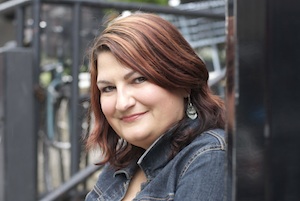08 Feb A Captioners’ Mini Manifesto
In “Which sounds are significant? Towards a rhetoric of closed captioning,” Sean Zdenek argues that captioning is an interpretive practice where caption quality can be assessed in terms of genre, audience, context, and purpose.
“A rhetoric of closed captioning goes beyond questions of accuracy, timing, and screen placement to consider the ways in which users, multimedia texts, and genres interface with captions to make meaning.”
It’s an excellent article that everyone in the industry should read. As captioners, we have to be incredibly thoughtful to do our job well. Not only do we need to consider what the intentions of the filmmakers are, we also need to consider what the experience of the hearing viewer is and how to replace the audio with captioning of equivalent value.
Caption quality and accuracy are more important than ever as the CRTC is now requiring broadcasters to get their captioning to within 95% word accuracy and 6 seconds audio synch by September 1, 2012. This is a big deal as the CRTC has never had an opinion on caption quality.
Here are 3 main points that Zdenek makes in his article. I’d argue that they are a mini manifesto for what we, as captioners, need to keep in mind as we perform our work.
A Mini Manifesto For Closed Captioning
1. “Captioning is a rhetorically complex and creative act. Captioners are rhetorical agents who must, at times, make decisions about which sounds to caption and how to caption them.”
We once captioned a period film which had a TV narrator speaking (fully audibly) in the background. The TV narration was from the incorrect period, dating from well after the time portrayed in the film. We asked the filmmaker whether this audio was going to be replaced, and they said they knew there was a mistake, but that the audio had to stay.
It was up to the captioner whether to highlight a mistake like this by captioning background audio which hearing viewers may or may not attend to. With audio, relative volume levels confer relative weight to information. In captioning, we can’t background or foreground information; there is no way to fade a caption in or out to strengthen or soften it, so all captions carry the same weight as all other captions. Do you pick out all the content of background walla and caption it? Or do you let the visuals carry the message? These are daily decisions for caption editors.
2. “Captions provide a different experience of the text.”
Zedenek gives some great examples of instances where captions revealed too much or too little, including:
- Interrupting dialogue to caption PA voiceover that doesn’t relate to the scene or the plot.
- Failing to caption sound effects that are essential to the plot.
- Spoiling the plot with omniscient captioning that reveals information not yet given in the movie.
For a non-hearing audience, captions play a central role in the experience of the text and captioners need to be mindful of this. We have active decisions to make as to what information we include and what we leave out as insignificant, distracting, or anachronistic.
3. “Captions do not merely transcribe audio content but transform it.”
A simple example is how the captioner’s worldview can be transmitted in their captioning. For instance:
- Do you hear people [CHANTING] in a language you do not speak, or are they [SINGING]? Are they [SINGING BEAUTIFULLY] or [SQUAWKING]?
- Can you name that language correctly? Is someone with a heavy accent [SPEAKING UNINTELLIGBLY]?
- Do you include every “um,” “uh,” and hesitation, which might convey more uncertainty than a hearing viewer would attribute?
- Can you get all the nouns right, across all genres and materials you caption?
- Can you correctly attribute references in the music you hear? Is that a banjo or a guitar? Baroque music or classical? If a character sings an aria, do you caption [SINGING AN ARIA], or can you name it? Can you caption the lyrics?
Which of these would constitute accuracy to the CRTC’s standards?
We have many, many opportunities to convey value…or to add value. We want the hearing viewer’s perspective that we are trying to portray to be a subtle and informed perspective, with as complex and complete an understanding as possible. Overall, we want to render the meaning of the text clearly and informatively, respecting the timeline, feel, and tone of the film.
Read Sean Zdenek’s article.
What to chat more about captioning? Get in touch with us.
July Recipe: Champagne Zabaglione with Fresh Fruit Compote
Nothing says summer like fresh fruit—add champagne into the mix and you have a fantastic dessert!
This recipe uses oranges, pineapple, strawberries, kiwis and pears but you can use any fruit that you have on hand. Adding champagne to the zabaglione (an Italian custard) takes the dessert from ordinary to an extra special treat!
Get the recipe on Epicurious.com.












